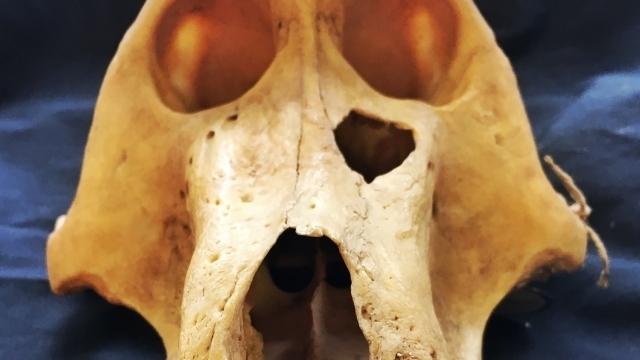
Repeated adaptations in the masticatory apparatus have continually redefined how vertebrates interact with their environment. Today, humans experience high rates of dental pathologies, and in comparison to other primates we have small jaws and teeth and a radically reorganized skull. This talk will explore patterns in the chewing apparatus in primates and humans, and how we can better understand how what we eat (and how we chew) has driven our evolution and the evolution of our closest relatives.
Dr. Claire Terhune’s research focuses on understanding the evolution and function of human and primate cranial morphology, human and non-human primate anatomy, and the initial dispersal of early humans into Eurasia. She completed her PhD at Arizona State University in 2010, was a postdoc position at Duke University teaching human gross anatomy, and then moved to the University of Arkansas in 2014. She has worked as an archaeologist and bioarchaeologist in Arizona, excavated dinosaurs in Mexico, worked on Paleolithic sites in Europe, done bioarchaeological fieldwork on the island of Cyprus, worked at the paleoanthropological locality of Hadar in Ethiopia, and she currently co-leads a project focused on identifying and excavating early Pleistocene paleontological localities in Romania. She has co-authored over 40 peer-reviewed publications and her research has been supported by the US National Science Foundation, Leakey Foundation, and others.
Location
Speakers
- Claire Terhune, University of Arkansas
Contact
- Stacey Ward
File attachments
| Attachment | Size |
|---|---|
| BIAN_seminar_poster_26_July_Claire_Terhune.pdf(557.5 KB) | 557.5 KB |